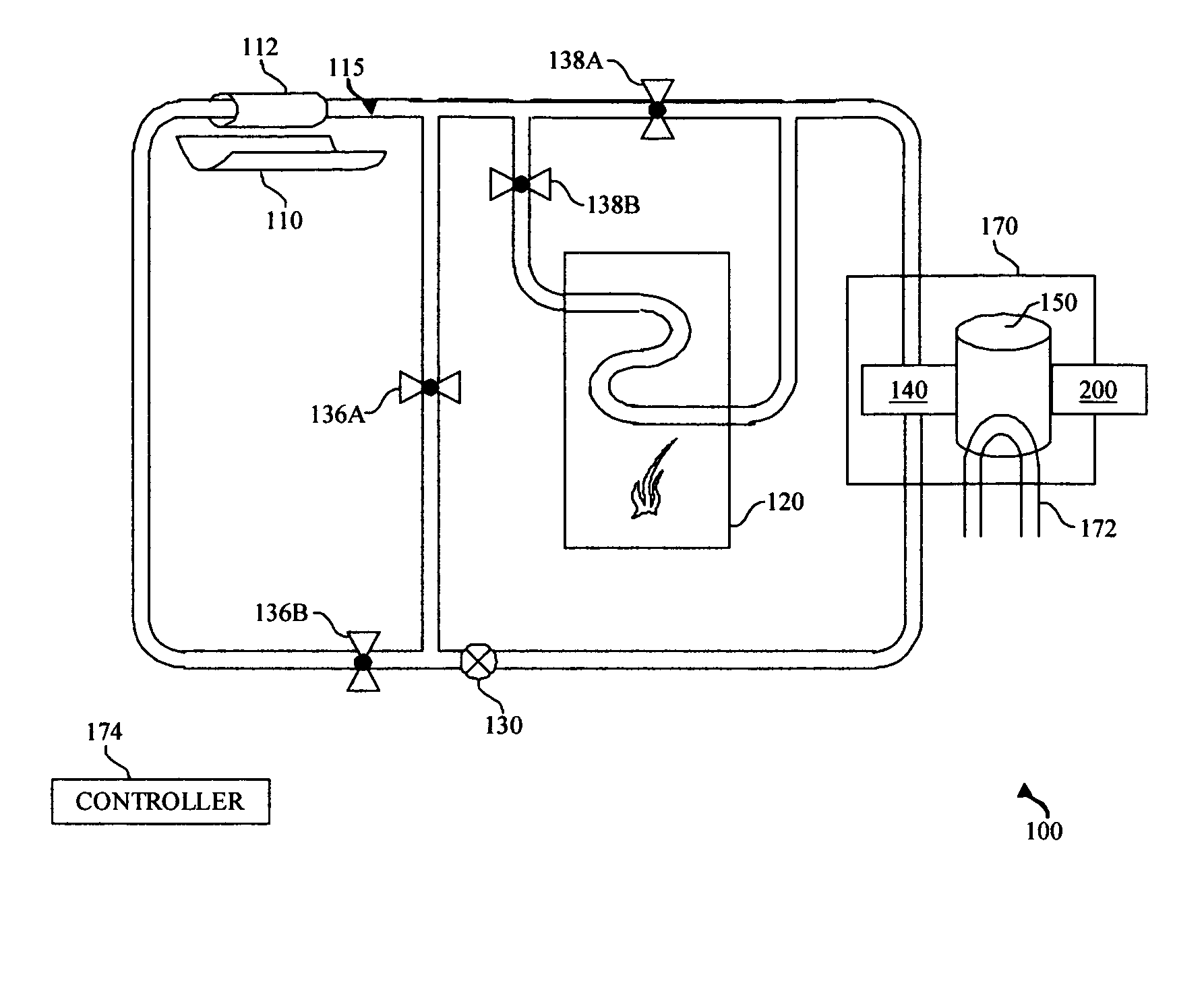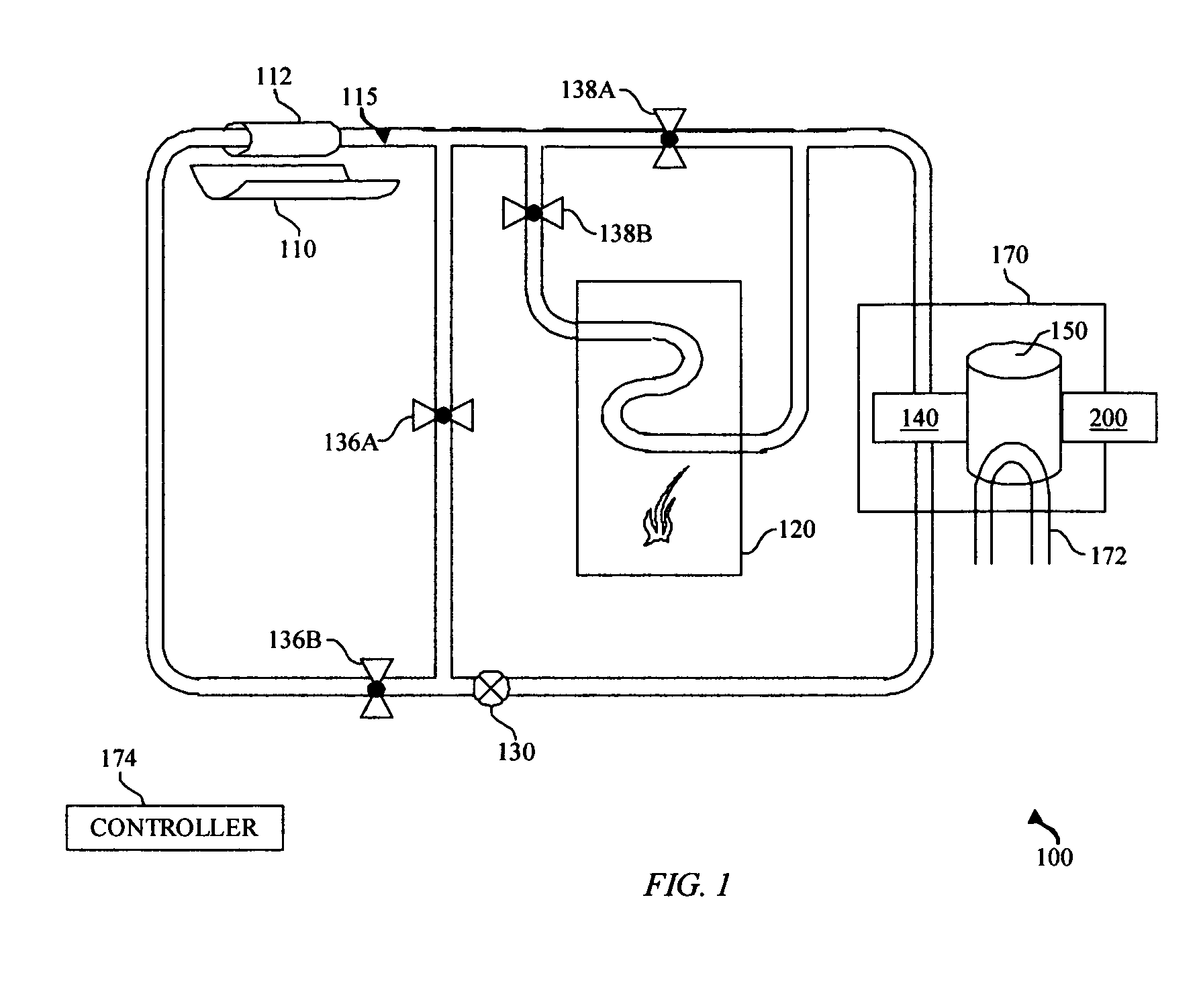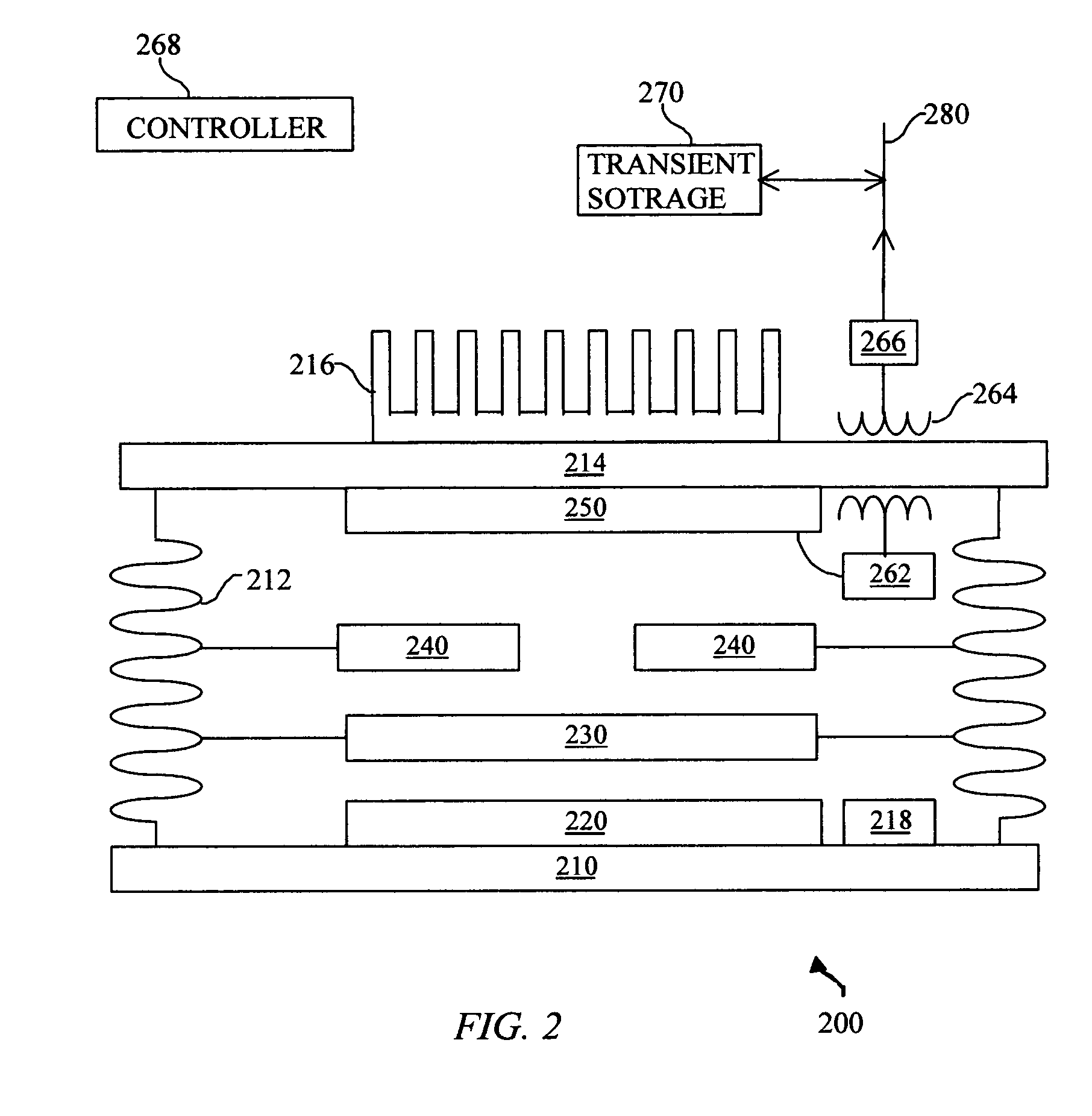System and method for thermal to electric conversion
a technology of thermal to electric conversion and system, applied in can solve the problems of poor energy conversion efficiency, high installation cost, and the field of solar generation suffers, and achieve the effects of low cost, efficient storage, and efficient storag
- Summary
- Abstract
- Description
- Claims
- Application Information
AI Technical Summary
Benefits of technology
Problems solved by technology
Method used
Image
Examples
Embodiment Construction
[0019] Embodiments of the present invention and their advantages are best understood by referring to FIGS. 1 through 3 of the drawings, in which like numerals refer to like parts.
[0020]FIG. 1 is a diagram illustrating a thermal to electric power conversion system 100 in accordance with the present invention. A variety of thermal input energy sources may be used. A parabolic trough solar concentrator 110 may provide a mid grade (around 300 C.) source of thermal energy input. The trough is controlled to track the position of the sun. Energy is focused onto absorber tube 112, which may be comprised of a high absorbtivity, low emissivity material such as dendritic nickel, vacuum insulated, and contain a circulating thermal transfer fluid 115. An example of one such a system is described in more detail in U.S. Pat. No. 5,058,565 “Solar Concentrator Device and Support Structure Therefor”. An alternate embodiment may instead use a high-grade (around 1000 C.) solar thermal source such as a...
PUM
 Login to View More
Login to View More Abstract
Description
Claims
Application Information
 Login to View More
Login to View More - R&D
- Intellectual Property
- Life Sciences
- Materials
- Tech Scout
- Unparalleled Data Quality
- Higher Quality Content
- 60% Fewer Hallucinations
Browse by: Latest US Patents, China's latest patents, Technical Efficacy Thesaurus, Application Domain, Technology Topic, Popular Technical Reports.
© 2025 PatSnap. All rights reserved.Legal|Privacy policy|Modern Slavery Act Transparency Statement|Sitemap|About US| Contact US: help@patsnap.com



